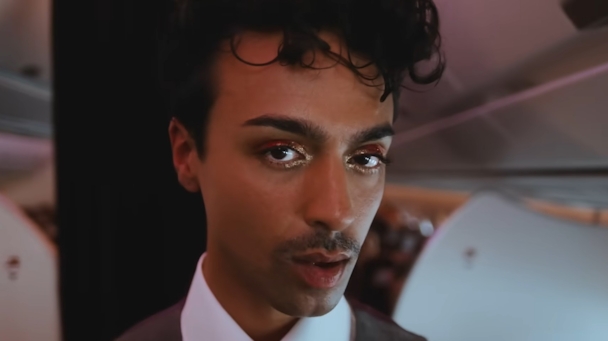Advertising’s social impact problem – and how to solve it
Lameya Chaudury has been heading social impact at Lucky Generals for a year now. She came from outside the industry and has a unique perspective on the troubles it needs to avail itself of.

When I joined Lucky Generals, I was fired up to see if advertising could truly use its influence for social impact. I knew the power was there—to reach millions, to shift culture—but I wanted to see if it could go beyond clever taglines and deliver something meaningful.
My career’s been a right smorgosboard: human rights, law, cultural relations and soft power for governments, mobilizing national behavior change, and even a stint in global tech. Not the typical road to adland, but it gave me a unique insight and hands-on experiences with people, places, and systems around the world.
It’s this mix that drives me to look beyond the surface and dig for impact that sticks. What I found in the UK advertising industry was a sector that prides itself on shaping culture but lacks the depth of lived experience and commercial understanding of social impact compared to other markets. The potential is massive, and we’re only just scratching the surface.
For more than 15 years, I’ve been helping brands invest serious budgets in community and social initiatives that make a long-term difference. My go phrase is, “where are our receipts?”
It’s time to back up our big ideas with meaningful, measurable action. Despite the speculation, social impact isn’t just a woke trend; it’s a billion-pound force cutting across all industries. The term first appeared at a Yale seminar on investor ethics back in 1969 so it’s no fleeting fad. Call it CSR, ESG, or social purpose—the idea is here to stay: businesses stepping up to create change that lasts, not just profits.
In an industry that’s quick to celebrate its creative edge, we’re falling behind where it matters most. There’s a massive, untapped opportunity to shift the conversation from purpose and intent to tangible impact that extends beyond the usual perception that this sits within a pro-bono charity brief.
Debunking the myths
First, let’s clear something up: social impact isn’t just a “feel-good” add-on. It’s not confined to pro-bono charity work or campaigns about saving the planet. Social impact is a business imperative, a competitive advantage, and a billion-pound opportunity. The Unstereotype Alliance report nailed it—inclusion drives income. Brands with inclusive ads see 16.26% higher long-term sales and 54% more pricing power. It shows what we’ve been saying all along at Lucky Generals: social impact is a business weapon.
Impact doesn’t have to wear a superhero cape; sometimes it’s found in supply chains, employee treatment, or the fine print of sourcing materials. Ipsos emphasizes that to harness DE&I as a driver of marketing effectiveness; brands must integrate it authentically, ensuring alignment with their strategy, values, and purpose. Take Virgin Atlantic’s See the World Differently campaign, for example. It unapologetically celebrates individuality—across age, gender, ethnicity, sexuality, and ability—while driving measurable change under its inclusion pillar. Beyond measuring effectiveness, we’re also assessing the tangible impact it is making under its inclusion pillar, guided by a robust social impact framework.
Any brand—whether it’s flogging beer or insurance policies—can integrate social impact into its core business. It’s not about strapping on a “feel-good” activation at the end. It’s about making those values part of the business model, the brand platform, and the everyday decisions. Our work with Virgin Atlantic showcases how inclusion is most authentic when it sits at the heart of the brand.
What needs to change
For all the potential, there are two big things the industry needs to do better if we’re going to make meaningful progress:
1. Start the conversation earlier. Too often, social impact is an afterthought—something bolted on when the main decisions have already been made. By then, it’s either too late to integrate properly, or the result feels disjointed. Social impact needs to be at the table from day one. It’s not a cherry on top; it’s part of the recipe.
2. Redefine what social impact means Right now, too many brands see it as optional—a nice-to-have if there’s time or budget left over. But done right, it’s a growth driver. It builds trust, loyalty, and long-term business success.
Here’s the watch out: let’s not get complacent.
Our industry is doing some good things, but there’s a risk that we’re patting ourselves on the back far too soon. We need to keep pushing, keep challenging, and—above all—keep showing brands that social impact isn’t just about doing good. It’s about doing better business.
Social impact can be the lever that propels brands from good to great. But only if we stop treating it as an afterthought. When it’s woven into our strategy from the beginning, that’s when real, tangible impact happens.
So, where do we go from here?
We keep raising the bar—pushing ourselves, our clients, and the whole industry to be braver and bolder. This isn’t just about ticking boxes or winning awards. It’s about shaping a fairer, more inclusive world while building better businesses. If you want to lead in this space, start asking the right questions: Are we embedding impact at every stage? Can we measure it? Are we brave enough to keep pushing? Let’s stop talking about purpose and start proving it. Gather your receipts – it’s time to make it happen.
Lameya Chaudury is head of social impact at Lucky Generals. Read more opinion on The Drum.
